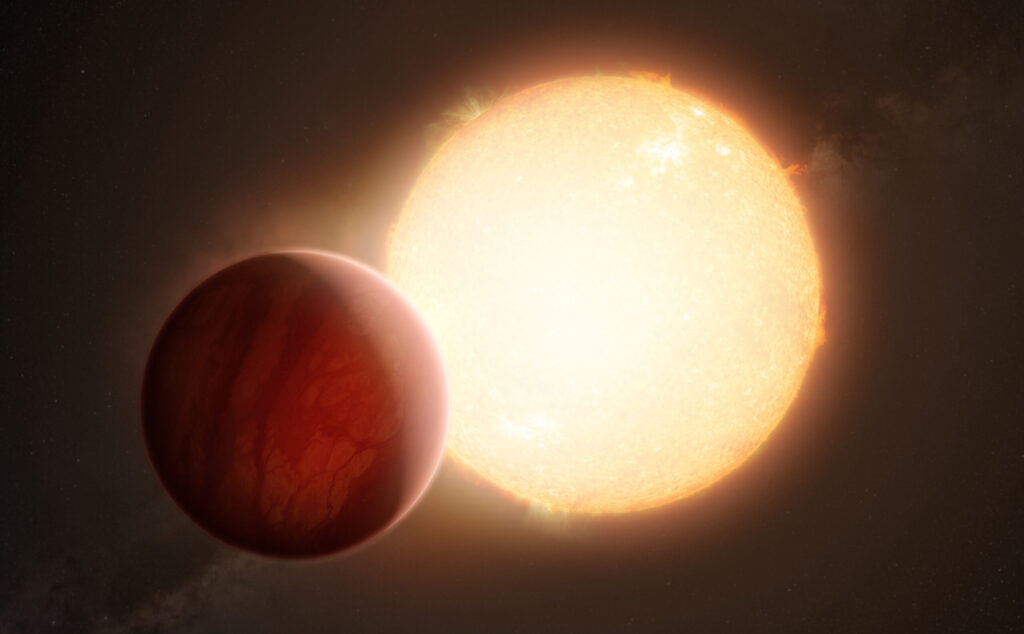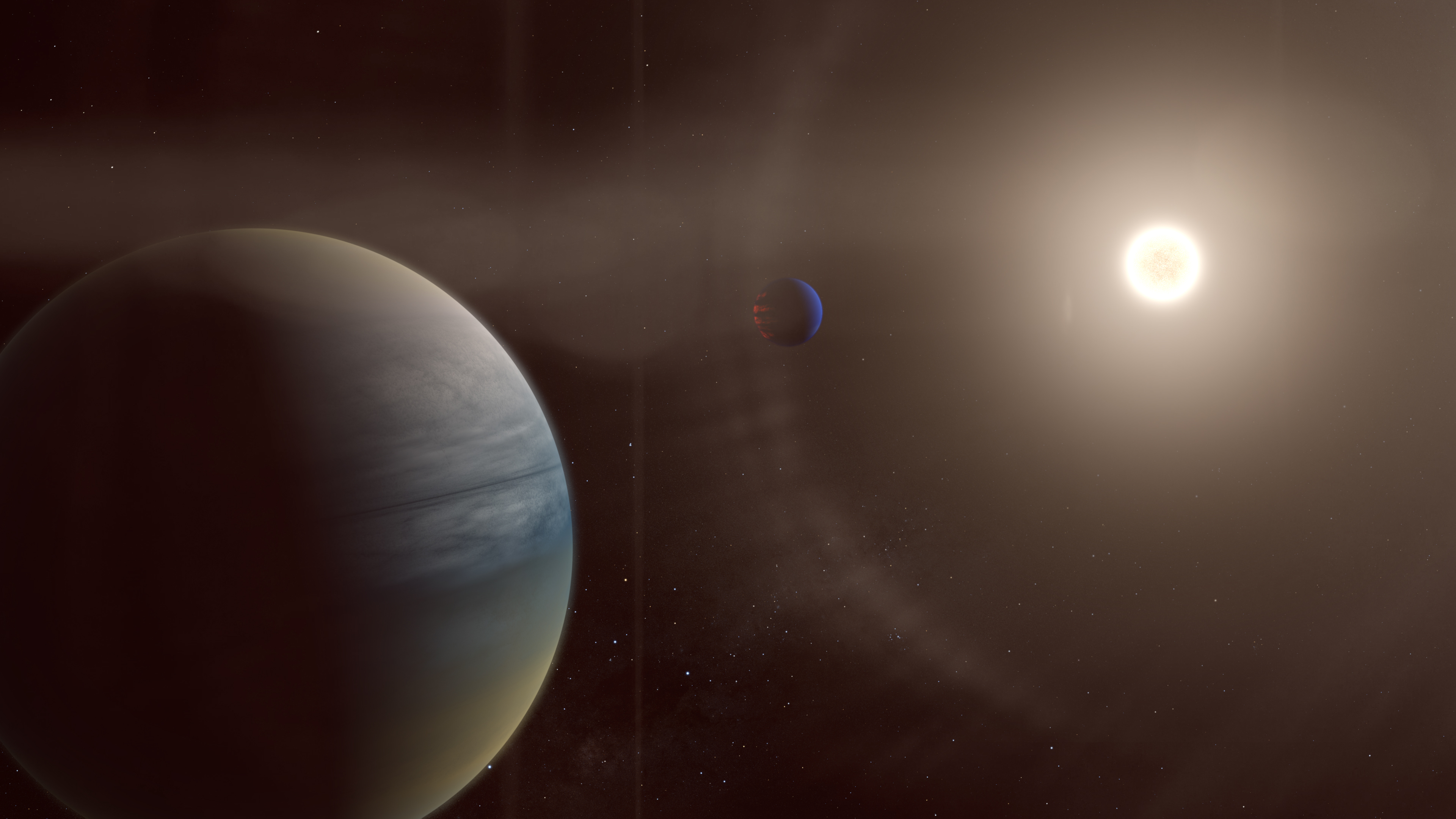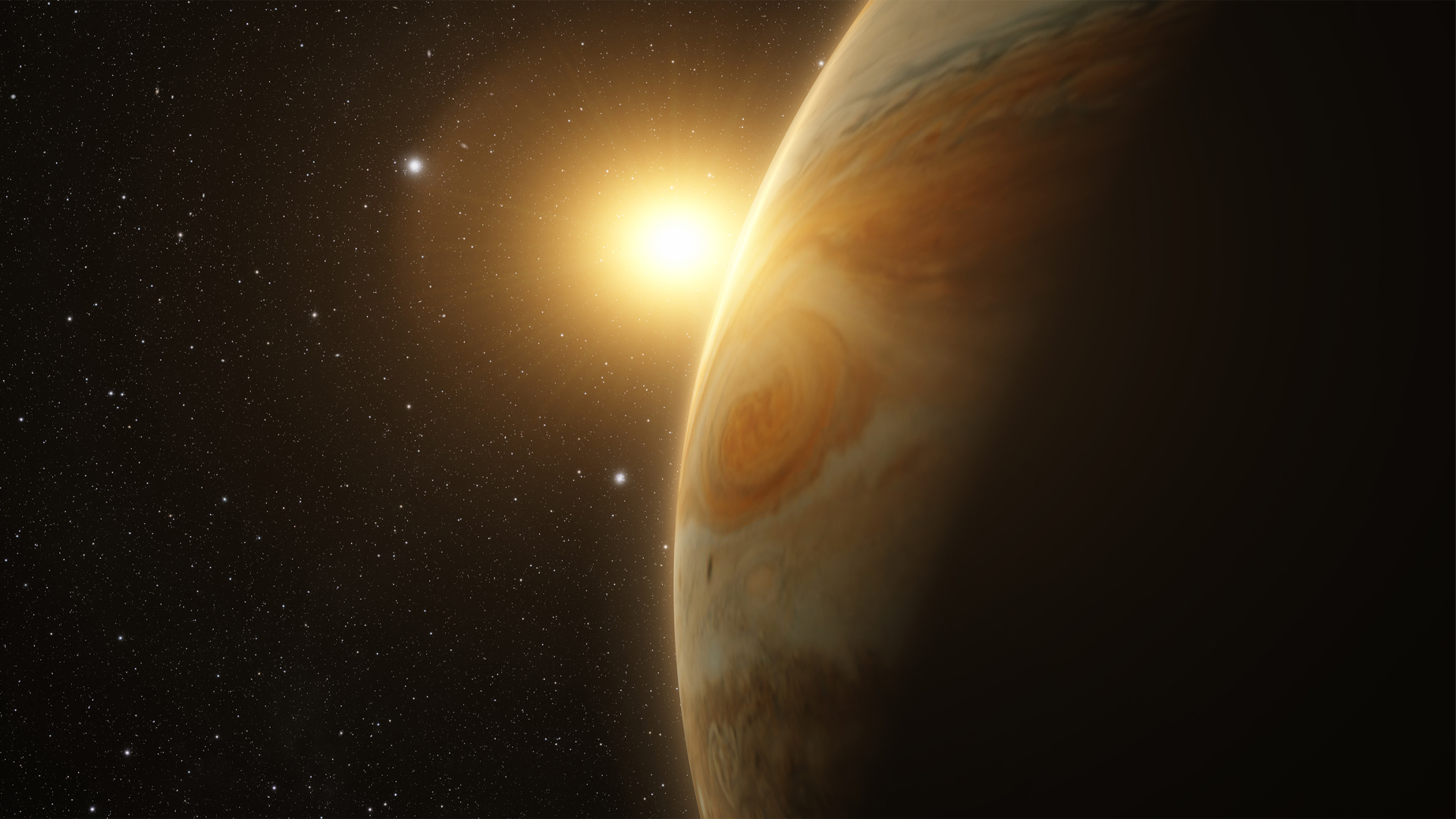An international team of researchers has reported the discovery of two previously unknown exoplanets. They orbit the sun-like star HIP 104045.

An exoplanet near a sun-like star in the artist’s image. Source: ESO/M. Kornmesser
HIP 104045 is a yellow dwarf located 173 light-years from the Sun. According to its characteristics, the star is very similar to the Sun. Its mass is only 3%, and its mass is 5% greater than the radius and mass of our luminary. HIP 104045 is estimated to be 4.5 – 5 billion years old.
During the observations of HIP 104045 made using the HARPS spectrograph mounted on the 3.6-meter ESO telescope, the researchers found deviations in its radial velocity. Subsequently, they were able to confirm that the fluctuations are caused by the influence of gravity of at least two invisible companions of the star.
The first exoplanet is a super-Neptune. Its mass is 43 times greater than the mass of the Earth (for comparison, the mass of Neptune is 17 times greater than the earth’s), and the period of orbit is 316 ± 75 days. The orbit of the exoplanet passes at a distance of 3 to 7 AU from its star.

The second exoplanet is a cold gas giant, which has about half the mass of Jupiter. Its orbital period is 2315±310 days.
According to the researchers, the presence of HIP 104045 inner super-Neptune and outer gas giant is another evidence that the structure of our Solar System is very different from other star systems. At the moment, only 1% of sun-like stars have been found to resemble its planetary configurations.

Source: universemagazine.com








